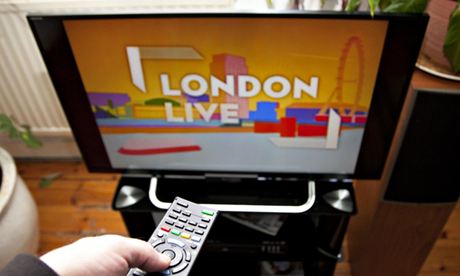
When the Department for Culture, Media & Sport fired the starting gun on local television in 2011, many in the industry were sceptical – recalling past cable station failures such as Channel M, Channel One and News Bunny and topless darts broadcaster Live TV.
Now three of the planned 50 local stations are on air – in Grimsby, Norwich and London. They have launched smoothly but how will they survive?
Ed Hall who heads local TV multiplex operator Comux admits the stations are launching against a background of repeated failures and closures in UK broadcasting, but says: "We know the model. We've gone into this with our eyes open. I do believe this time it's different."
He cites electronic programme guide prominence – on channel number 8 on Freeview in England and Northern Ireland – as a key change.
Another difference is the ability to run advertorials, plus local TV has public money to kick start it this time – with the BBC contributing up to £40m.
In addition, Comux wants to ensure local TV is financially secure in the long-term. The multiplex it operates has capacity for one local TV service, plus two ostensibly-national TV channels or video streams that broadcasters can buy (One has already been sold to children's channel POP) Comux returns those profits – thought to be around £4m per stream – back into local TV.
Norwich's Mustard TV, which launched on 24 March, and London Live, which began on 31 March with a reach of 244,000 viewers, are operating at different ends of the spectrum.
Backed by publishers Archant, Mustard TV launched for "significantly less" than seven figures, according to managing director Fiona Ryder with a coverage area of around 300,000 people, while London Live is thought to have a budget of around £15m, operating costs of around £25m and a potential audience of 9.5 million adults.
Ryder has a core team of 15 and says: "We approached it in a different way" by "looking at the potential advertising revenue" (around £5m) then the company worked backwards to work out programming and cost base.
According to analysts Enders: "Stations will have a relatively high cost base (we calculate a minimum annual budget of £500,000 assuming seven to 14 hours of original content per week) and it will be difficult to attract advertisers if they are not measured by BARB."
Ryder says "there are other ways of tracking engagement", such as the "thousands" of entries to a competition it ran.
"We hope to extend our transmission area up here," she says and is in talks with Freeview and Virgin: "For Archant it's part and parcel of a long-term strategy in long-form video."
Andrew Mullins, managing director of the Evening Standard, Independent titles and head of London Live says economies of scale are key to its business model.
"You can't enter this with a very high cost base, we've all learnt from the follies of the past. One thing that has changed is the technology so the barriers to entry are lower than before. The cost base is lower because we have a media business. We share overheads. We have cheap or free cross-subsidy and awareness building."
He points out the company's advertising sales operation is in-house, which means higher net revenues.
"There is a whole newsgroup: print, digital and video," which he says is attractive to national advertisers such as L'Oreal Studioline – who is running on London Live in a campaign valued at around £1m.
Mullins explains: "It makes commercial sense if you look at the way we work across the portfolio. That's why the economics makes sense for us. We've got a long, hard journey to get people [but] we've got the ability to last the distance."
"If we can prove we can do it in London … and make it profitable and others are having trouble, we'll naturally look to see if we can expand. I hope others do well though."
He highlights the opportunities created by BBC3 moving online only. Last year, BBC3 had a London share of 1.5% while London Live – with its youth-skewed programming – is aiming for a viewing share of around 1%.
Enders is less optimistic: "History does not bode well for London Live. We are quite sceptical about the local TV initiative in the UK in general, and certainly as profitable business proposals in many UK locations."
Enders suggests London Live costs "a mere £2,300 per hour" and asks: "How will London Live be measuring success? We think assuming a break-even position within two to three years would not be unreasonable, which raises a very simple question: can London Live generate a revenue run-rate north of £25m? There are too many unknowns to predict a precise outcome with confidence. The one certainty is that the road will be bumpy."
Hall points out that his company took on Channel M and it is now "healthily profitable" adding: "There are going to be successes and failures. But a lot of the people involved come from different backgrounds and there will be new ways of working, it's incredibly exciting."
Local TV: previous attempts to make it work
Channel M – Manchester television station owned by Guardian Media Group. Axed in 2012 after 12 years on air after GMG concluded it could not provide a "commercially viable service" under the new framework for local TV.
Channel One – Set up by Daily Mail owners Associated Newspapers in 1994 as London's first 24-hour cable channel. The format was rolled out regionally. Closed in 1998.
Live TV – Mirror Group Newspaper's ill-fated channel led by Kelvin Mackenzie and Janet Street-Porter. It drew around 200,000 viewers and a 1% share. Programming went downmarket and it was axed in 1999 but revived in 2003 before becoming Babeworld

